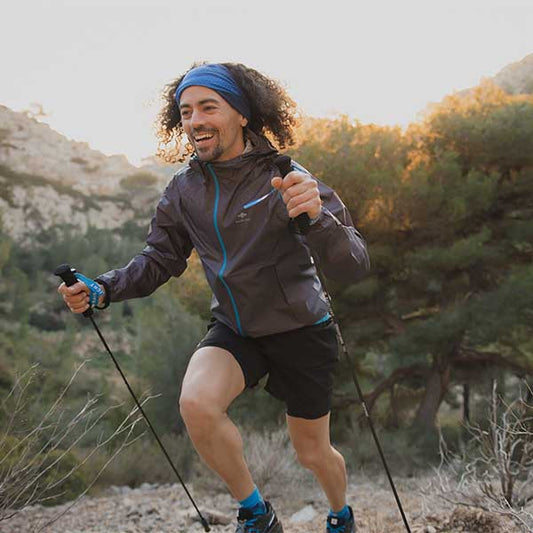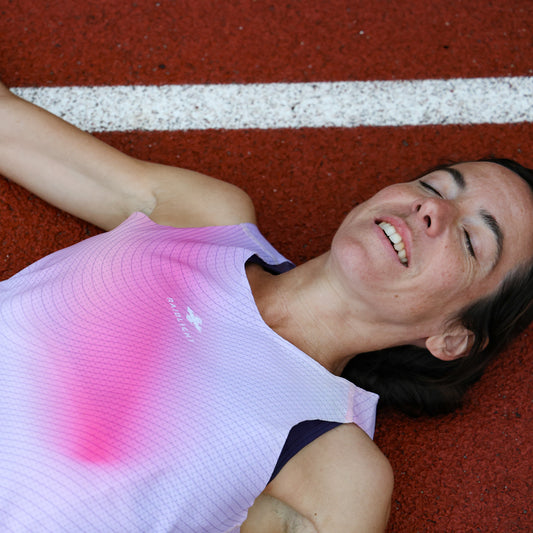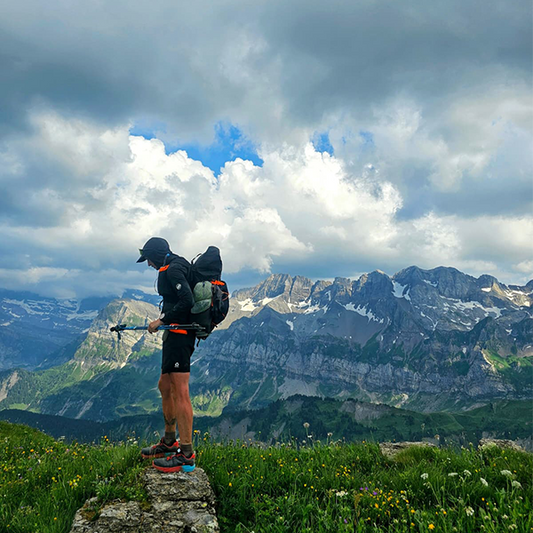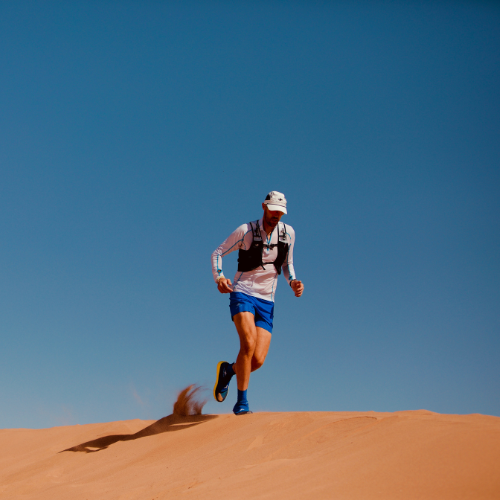Canitrail is an activity that combines a passion for trail running and a love of dogs, offering a unique experience of sharing and joint effort on the trails. Before you start canine trail running, it's important to take a few precautions.
Training, food, hydration, equipment... Find out all Damien Nieto's recommendations and tips for running with your dog in the best possible conditions. Damien, an Idog ambassador and member of the Canicross des Monts club (69), is passionate about running and animals. For several years now, he has been combining his two passions by practising canicross and canitrail.

First of all, before you start canine trail running, it's very important to know that there are certain precautions to be taken. It is strongly advised not to make a young dog run, as its growing bones will be greatly weakened. Wait until the dog is at least 12 months old if it's a small or medium-sized breed, and wait until it's 18 months old if it's a large breed. You should also have your dog's health checked by your vet, in the same way as you would consult your doctor for a medical certificate. Some breeds of dog, such as bulldogs, are prone to respiratory problems.
That's why it's so important to listen to and apply your vet's advice.
Education and socialisation
You'll soon realise that it's not that ‘natural’ to run with your dog. He'll run in front of you or close to you, waiting for you to tell him which direction to take, how fast to go... If your dog isn't trained and doesn't respond to basic commands, you could quickly find yourself in danger.
It is therefore essential that your dog obeys the more basic commands such as heal or ‘stop’, which will be very useful to you. Of course, practice helps to reinforce these commands, but it's a good idea to get them right before you start.
If you plan to compete, it will be important to socialise your dog and get him used to running with others.
Gentle progress
As with everything, the key is to be gentle and progressive. Start with short outings of 15 to 20 minutes a week to avoid any risk of injury to you or your dog. The pace should be moderate. As the sessions progress, you'll increase the duration and speed, but avoid burning out too quickly. Your dog needs time to adapt his body to running, just as you do.
Adapt to your dog
Whatever the case, always adapt to your dog's abilities, not the other way round. If you force him to follow you, the sports outing can very quickly become an unpleasant experience for both of you, not to mention the risk of injury. It's up to you to adapt to your dog, not the other way round.
Know when to stop
As soon as you notice the first signs of fatigue in your pooch, stop. Gasping, dragging paws, lowered ears, tongue hanging out, lowered tail... These are all warning signs.
Equipment
Canine trail running requires the right equipment: harness, belt, traction lanyard, etc. You can find everything you need in our dedicated collection by clicking here. And don't forget to pack a trail pack for all your essentials, as well as hydration for your dog.
Nutrition
Dogs have fragile digestive systems, so never go for a run if they've just eaten (they risk their stomach turning). Leave about 3 hours between eating and going out.
Understanding, listening, sharing
When you first start out with your dog, he or she won't be able to follow you for the same distance or at the same intensity right away. So start with very short, and above all very gentle, free runs. Then gradually increase the distance and intensity. To get him used to it, you could go for walks, for example, then gradually increase the distance and the gradient. Endurance and speed come gradually, as they do for us.
Listen to your dog, which also means juggling with his moods - if he doesn't feel like it, don't force him. Sometimes outings will go really well, and you'll be able to make rapid progress, while at other times it'll be the other way round. Don't forget that these are moments of togetherness and sharing, you're there to have a good time together.










